Image
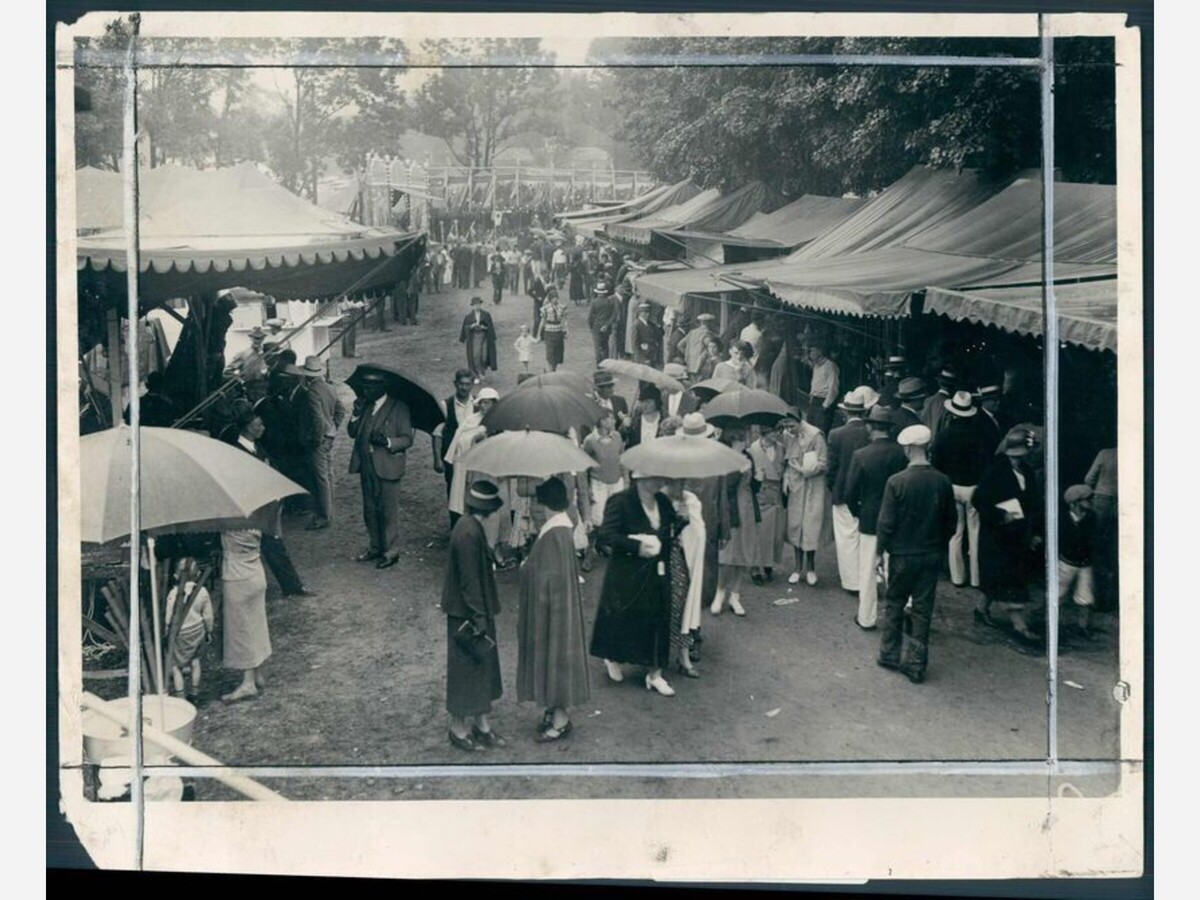
The 143rd State Fair Begins
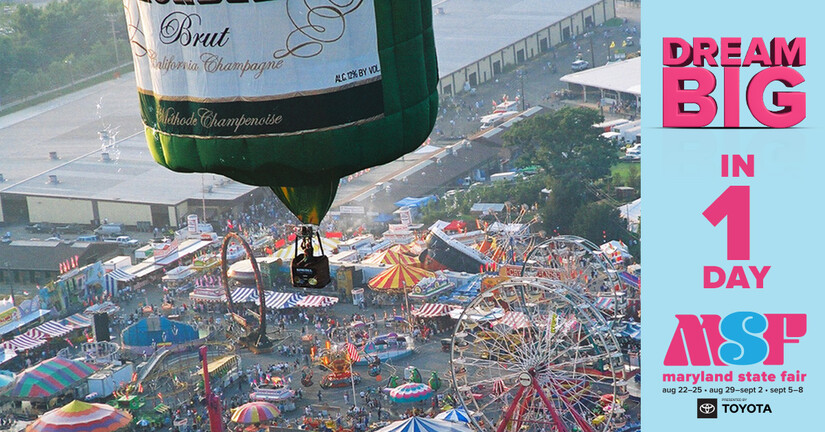
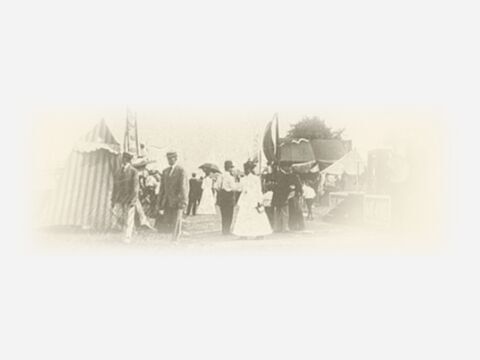
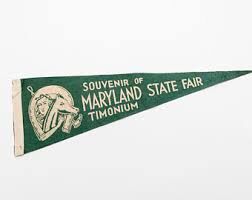
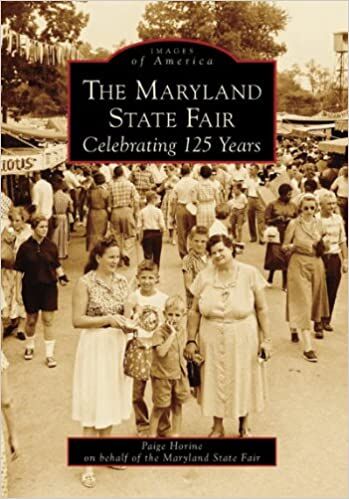
Amon Bosley constructed a one mile track when he purchases the property in this year.
Sources also indicate that the track was purchased by Jim Garrison who held formal racing meets between these dates.
The track was destroyed when the Baltimore and Susquehanna Railroad was extended.
The Baltimore County Grange hosted a one day picnic and exhibition of livestock, agricultural products, and homemade wares. The success of this event was the impetus for the creation of an annual Fair in Baltimore County. That Fair, which was originally intended to be a county-wide event, became The Maryland State Fair.
A group of community leaders incorporated as The Agricultural Society of Baltimore County. This organization ran the early fairs, which were originally known as “The Timonium Fair.”
The first Timonium Fair was held.
The Timonium Fair and The Maryland State Fair at Pimlico hold joint fairs at the Timonium Fairgrounds.
OCTOBER 1833 Jim Garrison
In 1878, after several unsuccessful attempts to establish an on-going fair at other locations around Baltimore, a group of Maryland businessmen operated a successful fair on a four-acre site in Lutherville, MD. Despite its success, the Lutherville Fair was short lived because an extension of the Northern Central Railway was constructed in the middle of the fairgrounds.
Their success in Lutherville, however, gave the operators resolve to establish an annual fair, and in December 1878, they incorporated as The Agricultural Society of Baltimore County. The corporation leased a 37-acre plot of land on the York Turnpike on what was then known as "the Timonium Estate." The first Fair at its new home was held September 9-12, 1879. The Northern Central Railway, the cause of the closing of the Lutherville Fair, was now the primary source of transportation for fairgoers from Baltimore to the Timonium Fairgrounds during the rest of the century. Other fairgoers walked or rode horses, wagons, carriages, and carts to the fairgrounds using the Turnpike.
Late in the century, The Agricultural Society of Baltimore County faced stiff competition from the Pimlico Fair, also referred to as the State Fair. Ultimately, the two groups held joint fairs in 1894 and 1897, and in 1906, merged to form one corporation - the Maryland State Fair and Agricultural Society of Baltimore County, Md. Their annual Fair became known as The Maryland State Fair.
The early years at the Fair saw tents and wooden structures in use to exhibit home arts, farm and garden products, and livestock shows. Plowing and working oxen competitions were some of the popular but few attractions. Races were held at the track, and results were forwarded to interested horsemen at Baltimore and Alexandria, VA, by way of carrier pigeon. Food concessions consisted of sandwiches made by the farmers’ wives, and amusements involved sideshows, sack races, and greased pole climbing.
The Maryland State Fair grew and prospered, adding many attractions and exhibits, including an airmail delivery at the 1918 Fair. The annual event continued until 1943 when the Fair was interrupted because of the war effort. The fairgrounds were leased to the U.S. Army for a storage depot and a vehicle repair center. After a three year absence, the Fair reopened it gates in 1946.
In the 1950's growth in Baltimore County flourished, and certain business interests wanted to purchase the fairgrounds site for industrial development. The majority stockholder of the Corporation, the Maryland Jockey Club, agreed to sell. However, a group of agriculturists, business leaders, horsemen, and bankers formed the "Save the Maryland State Fair Committee." The Committee raised over $600,000 to purchase the fairgrounds, ensuring that The Maryland State Fair at Timonium would continue to be Maryland's premiere event at the end of each summer.
Another crisis was averted in the 1970's. The Maryland Racing Industry took steps to have the Fair's Thoroughbred racing dates transferred to other Maryland tracks. Fair Directors recognized that such a move would threaten the survival of the Fair. The "Committee of Friends of the Maryland State Fair" was established to strengthen the cooperation between Maryland agriculture and horse breeding interests - a relationship that had been a tradition in the State since the mid 1700's. The Committee was successful in convincing the public and the Maryland Legislature of the value in keeping Thoroughbred racing a part of the Fair. The Committee also prepared expansion plans for the Fair, which resulted in a $5 million grant from the State of Maryland for building, modernization, and year-round use of the fairgrounds.
In its long and colorful history, the Maryland State Fair has grown from 37 acres to over 100 acres. Because of a commitment to continually improve and expand the event, Fair organizers found that they could no longer squeeze in more entertainment and attractions in what had become the traditional 10-day run. Thus, in 1999, the Fair added a day, making the Fair an 11-day event and in 2018 a 12-day event. Since then, the Fair has continues to answer the challenge of staying on top with an ever-evolving array of competitions, events, and attractions that have drawn more and more visitors without losing sight of the mission that had guided the event’s course since 1879: to encourage the educational growth of youth (among them 4-H and Future Farmers of America) by providing a venue where they can showcase their skills; and, to educate the general public regarding agriculture, its related fields and its importance to our future.
As many citizens become more removed from agriculture, the Fair has attempted to close the gap with 1999 additions of Agriculture Fair Tours of animal barns, Milk-It Traditional Cow Milking Lessons & the Birthing Center. The Birthing Center, one of the most popular venues at the Fair, has given thousands of fairgoers the opportunity to witness the birth of calves, piglets and hatching of chicks under the supervision of veterinarians and University of Maryland Agriculture professors and students.
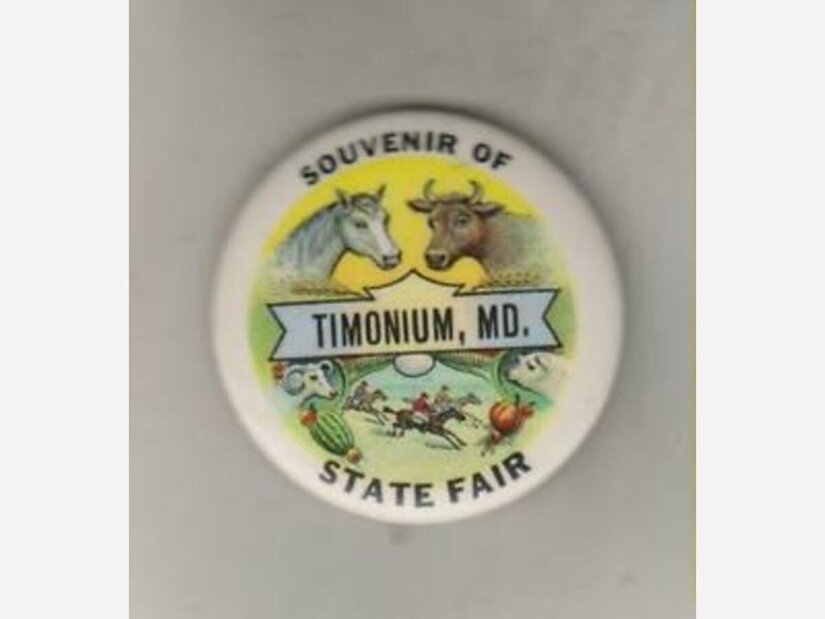
The first two decades of the new millennium brought numerous, exciting updates and improvements to the Maryland State Fair and the Fairgrounds:
The Maryland State Fair never forgets that exhibitors are at the heart of the event. Technological advances helped make life easier and more environmentally friendly for thousands of exhibitors by replacing its paper Premium Catalogues with an online entry system.
The old Maryland State Fair 4-H Poultry & Rabbit Building was replaced with The Mosner Miller Building, which houses The Maryland Department of Natural Resources Exhibit Room and The Maryland State Fair Museum (open during the Fair) -- a wander-land of ribbons, trophies, uniforms, souvenirs, photographs, memorabilia, and the Hall of [Maryland State Fair & Agricultural Society, Inc. Board] Presidents. During the off-season, the building is used as a rental facility for various meetings and events.
Maryland State Fair’s Midway Operators, Deggeller Attractions, reconfigured the Midway of rides, traditional fair foods and games to separate the big rides from the children’s rides. The separate Kidde Land ride area was well received. And, the Maryland Foods Pavilion, that for decades satisfied local palates with a variety of food fresh from Maryland farms and the Chesapeake Bay, expanded to include the Chesapeake Craft Brew & Wine Garden.
In 2016, the Maryland Jockey Club opened the Timonium Off Track Betting Center on the second floor of the Maryland State Fairgrounds historic Grandstand. The already existing off track wagering facility was renovated in to a spacious simulcast center.
Nick’s Grandstand Grill and Crab House, adjacent to the OTB, on the second floor of the Maryland State Fair Grandstand opened to provide year-round crafty and unique seafood and American cuisine.
Beginning in 2018, a variety of beautification projects were started: The chain link fencing surrounding the Fairgrounds was replaced with attractive wrought iron style fencing; The Timonium Racetrack Paddock was expanded and renovated with a hand-crafted iron gate, post-and-rail fencing, and a large American Elm Tree planted in the center.
2020 started as a particularly sunny year with the planning and implementation of a variety of environmental stewardship efforts, among them: installing more than 7,000 solar panels, planting native to Maryland trees on site, and participating in community clean-up projects.
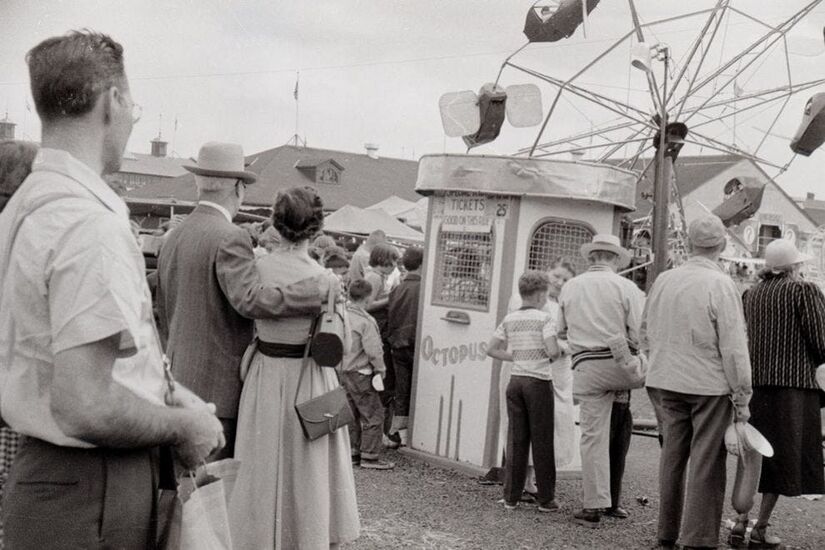
-----TELL YOUR FRIENDS TO SUBSCRIBE FOR IN DEPTH EVENTS COVERAGE-----
FROM WIKIPEDIA:
On Tuesday, September 17, 1878. Grafton Marsh Bosley hosted a series of contests and ball to benefit yellow fever sufferers at his property north of Towson.[1][2][3] The following year, 1879, the fair was moved to its current location in Timonium and was held from September 9 through September 12. In 1906, the Lutherville Fair merged with the Pimlico Fair and became known as the Maryland State Fair. The fair was suspended from 1943 through 1945 during World War II. In 1999, the fair grew to its current length of 11 days.[4]
The New York Times reported that on October 14, 1870, President Rutherford B. Hayes would go to Frederick to attend the "Maryland State Fair."[5] In 1878, after several unsuccessful attempts to establish an ongoing fair at other locations around Baltimore, a group of Maryland businessmen operated a successful fair on a 4-acre (16,000 m2) site in Lutherville, Maryland. Despite its success, the Lutherville Fair was short-lived because an extension of the Northern Central Railroad (the former Baltimore and Susquehanna Railroad) was constructed through the middle of the fairgrounds.
Their success in Lutherville, however, gave the operators resolve to establish an annual fair, and in December 1878, they incorporated as the Agricultural Society of Baltimore County. The corporation leased a 37-acre (150,000 m2) plot of land on the old Baltimore and York Turnpike on what was then known as "the Timonium Estate." The first Fair at its new home was held September 9–12, 1879. The Northern Central Railroad, cause of the closing of the Lutherville Fair, was now the primary source of transportation for fairgoers from Baltimore City to the south to the Timonium Fairgrounds during the rest of the century. Other fairgoers walked or rode horses, wagons, carriages, and carts to the fairgrounds using the Turnpike and its southern end of Greenmount Avenue. Later visitors used the old #8 electric street car line of the old United Railway and Electric Company, later after 1935, as the Baltimore Transit Company. After the last street car rode its course down York Road and Greenmount Avenue to Catonsville in 1963, diesel buses brought visitors to the Fair in addition to the thousands of cars parked on acres of lots around the grounds for that last week of summer.
Late in the century, The Agricultural Society of Baltimore County faced stiff competition from the nearby Pimlico Fair, also referred to as "the State Fair". Ultimately, the two groups held joint fairs in 1894 and 1897, and in 1906, merged to form one corporation - "the Maryland State Fair and Agricultural Society of Baltimore County, Maryland". Their annual Fair then became known as "The Maryland State Fair".
The early years at the Fair saw tents and wooden structures in use to exhibit home arts, farm and garden products, and livestock shows. Plowing and working oxen competitions were some of the popular but few attractions. Races were held at the track, and results were forwarded to interested horsemen at Baltimore and Alexandria, Virginia, by way of carrier pigeon. Food concessions consisted of sandwiches made by the farmers’ wives, and amusements involved sideshows, sack races, and greased pole climbing.
The Maryland State Fair grew and prospered, adding many attractions and exhibits, including an airmail delivery at the 1918 Fair. The annual event continued until 1943 when the Fair was interrupted because of the war effort in World War II. The fairgrounds were leased to the U.S. Army for a storage depot and a vehicle repair center. After a three-year suspension, the Fair reopened its gates in 1946.
In 1999, the Fair added another day, making the Fair now an 11-day event.
In 2020, the fair was restricted to private livestock and other virtual shows due to the COVID-19 pandemic.
Timonium Race Track
 |
|
| Location | Maryland State Fair, at York Road & Timonium Road, Timonium, Maryland 
|
|---|---|
| Owned by | Maryland State Fair & Agricultural Society, Inc. |
| Date opened | September 9, 1879 |
| Course type | Flat |
| Notable races | "Alma North Stakes" "Taking Risks Stakes" |
In the 1950s, growth in population and development in increasingly suburban Baltimore County flourished, and certain business interests wanted to purchase the fairgrounds site for industrial development. The majority stockholder of the Corporation for the M.S.F. & A.S. of B.C., which was now the Maryland Jockey Club (which also owned and operated the famous Pimlico Race Course in northwest Baltimore, and home to the Preakness Stakes - one of thoroughbred horse racing's "Triple Crown"), had agreed to sell. In the ensuing controversy, however, a group of agriculturists, business leaders, horsemen, and bankers formed the "Save the Maryland State Fair Committee." The Committee raised over $600,000 to purchase the fairgrounds, ensuring that The Maryland State Fair at Timonium would continue to be Maryland's premiere event at the end of each summer.
Another crisis was averted in the 1970s. The organized Maryland racing industry took steps to have the Fair's Thoroughbred racing competition dates transferred to other Maryland tracks in order to re-trench a declining audience, purses and media attention. Fair Directors recognized that such a move would threaten the survival of the Fair. The "Committee of Friends of the Maryland State Fair" was established to strengthen the cooperation between Maryland agriculture and horse breeding interests - a relationship that had been a tradition in the State since the mid-18th century. The Committee was successful in convincing the public and the state legislature in the Maryland General Assembly of the value in keeping Thoroughbred racing a part of the Fair. The Committee also prepared expansion plans for the Fair, which resulted in a $5 million grant from the State of Maryland for building, modernization, and year-round use of the fairgrounds.
One of the most famous horses to race at Timonium was the Maryland-bred colt Bee Bee Bee who competed and won here in the fall of 1971, then in May 1972 at Pimlico Race Course, won the second leg of the U.S. Triple Crown series, the Preakness Stakes.
Currently the racetrack hosts events during the fair, including the "Alma North Stakes" for fillies and mares and the Taking Risks Stakes. [1]
The Miss Maryland Agriculture Program (MMAP) has been a feature of the Maryland State Fair since the 1930s. The name of the contest has changed several times throughout the decades. When it began, the winner received the title Miss Timonium Fair, but winners have also been given the title of Farm Queen, and now the winner receives the title of Miss Maryland Agriculture.
According to Phyllis McKenzie, the 2012 Miss Maryland Agriculture winner, the program is a, "knowledge contest run through the farm bureau program. [The judges] will be looking for a lot of knowledge in all the diversities of agriculture and the Maryland Farm Bureau throughout their policies and many programs that they offer for farmers and other agriculturalists."